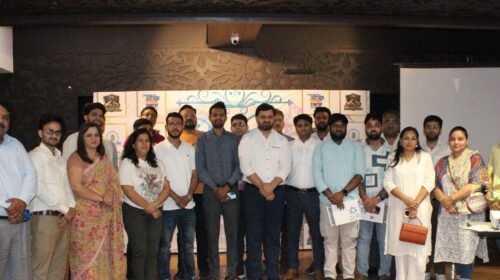In 1918, India was beset by an influenza pandemic which lasted till 1920. The disease affected all individuals between the age of 20 and 40 in particular – the Ganga, it was stated, it was swollen with dead bodies (Suryakant Tripathi, the famed poet). In its aftermath, the pandemic killed over 14-17 million (~5% of the population), the highest in the world. India’s population actually fell in the decade between 1911 and 1921. In March 2020, India was faced with grave predictions about the COVID-19 outbreak – It was even predicted that India would see ~60% of its population (700-800 million people) getting infected in the near term in the worst-case scenario. While ICMR officials were more circumspect, the centre took necessary action by pushing for a “hard” lockdown (notably the most stringent in the world) of the entire country in March 2020. For any country, pursuing such stringency was a hard ask – India clearly attempted this to provide a window to build up healthcare capacity (across beds, PPEs, testing kits). The lockdown was fairly successful in creating space for policy measures to build up state capacity to deal with a long struggle with the disease – even now, we are at ~1 million confirmed cases (with ~342,000 active cases, of which ~1.94% are in ICU; Ministry of Health, July 2020) basis existing testing capacity.
It is important to note that the outbreak has seen significant recoveries too in India – the number of recovered COVID-19 patients exceeded the number of active cases by ~3lakh on July 19, 2020, reaching a total of ~6.77 lakh patients recovering (a recovery rate of ~62.86 by that date). This, in the Ministry of Health’s words, has been due to “effective clinical management of the moderate and severe cases through a well-executed standard of care protocol has ensured high rate of recovery among the COVID patients”. Meanwhile, testing infrastructure has also been ramped up significantly – ~3,58,127 samples were tested on July 18, 2020, with a cumulative total of 1,37,91,869 samples tested so far (effectively a rate of 9994.1 tests per million). The diagnostic lab network has been also significantly expanded, reaching 1,262 labs, of which 889 are in the government sector.
We must also note the response by the Centre and various states in terms of implementing the lockdown. India notably issued ~4,000+ notifications over the ~60 day period of the lockdown. Under the Prime Minister’s direction, much of this was to enable the creation, from scratch, of a system to keep citizens indoors while keeping them well-supplied for essential goods. This was an activity without precedent – nothing in independent India’s history showcases a government response to enable the country to survive, amidst a pandemic, and then move back towards economic vitality. However, under Prime Minister Modi’s direction, both the centre and the states showed alacrity in responding to a rapidly-changing situation. After an initial focus on understanding the scale of the pandemic, the Centre quickly changed tack to emphasise greater production of PPEs. Meanwhile, the Prime Minister’s exhortations also made this into a people’s movement – without buy-in from a willing and motivated public, no nation could have stayed at home for 2 months. While the US and UK faced challenges from recalcitrant citizens, India showcased unity for this purpose across its urban and rural landscape. Motivated by the Prime Minister’s regular speeches, this nation stood as one during the initial grim days.
Even on the vaccine front, India shows potential. Zydus Cadila is currently planning to complete late-stage trials for its COVID-19 vaccine candidate by March 2021, with a push to producing 100 million doses annually, if successful. Bharat Biotech, in collaboration with the National Institute of Virology and the Indian Council of Medical Research (ICMR), has a vaccine candidate, Covaxin, which has now been approved for Phase I and II human clinical trials – trials have already begun in Hyderabad. The government is making all efforts to fast-track these vaccines (in line with clinical trial procedures) with fast regulatory clearances. Meanwhile, Indian firms have been encouraged to tie-up with key research institutes conducting clinical trials with a push for sharing our vaccine-manufacturing capacity to produce vaccines for the world. The Serum Institute of India (SII) has tied up with Oxford University and AstraZeneca for a licensing arrangement to manufacture an experimental COVID-19 vaccine which is in Phase II trials – the firm already has manufacturing capacity to produce 500 million doses of vaccines in a year. India’s regulatory authorities have partnered with the firm in expanding its manufacturing capacity, which will help to smoothen out procedural roadblocks.
While India’s current strategy may sound opportunistic in nature, a whack-a-mole tactic, this is in fact the model that the world at large is increasingly adopting. The UK has announced measures to open up its public areas and loosen restrictions, while pursuing a strategy that seeks to contain localised outbreaks – the UK’s health secretary, Matt Hancock, stated “Each week, there are more than 100 local actions taken across the country – some of these will make the news but many more are swiftly and silently dealt with”. The COVID-19 outbreak will not be resolved by a silver bullet solution (for e.g. a simple drug or a vaccine) – we are now in the new normal, where countries usurp the entire supply of relevant drugs (e.g. Remdesivir and the United States). This will be a prolonged struggle where the internal resilience of a country and its government will matter. The Modi government has shown leadership in handling an unprecedented crisis, with India doing better so far than certain other countries, despite the challenges of our large population, high density and poverty. Under this leadership, India will overcome this virus and rise again.





